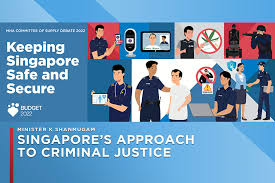Analysis of SGSecure’s Children’s Storybook Initiative
The Storybook: “Ack! Furtropolis Is Under Attack!”
Story Overview
The storybook centers on Hammie, a hamster protagonist who witnesses a bomb attack in his neighborhood. The narrative follows how the animal characters in Furtropolis come together after the traumatic event to support one another. At 37 pages, it appears to be designed with bold, colorful illustrations that would engage young children while addressing serious subject matter in an age-appropriate way.
Key Themes and Morals
- Community Resilience
- The story emphasizes how communities can unite during crises
- Shows characters supporting each other in the aftermath of a traumatic event
- Teaches children that collective response is vital during emergencies
- Vigilance and Awareness
- Encourages children to be observant of their surroundings
- Explicitly instructs children to alert adults if they notice something suspicious
- Normalizes the concept of security consciousness from a young age
- Emergency Response
- Provides practical guidance on what children should do during emergencies
- Teaches children to call for help if friends are injured
- Aims to build confidence in children’s ability to respond appropriately
- Emotional Processing
- The story likely addresses fear and anxiety that emerge during emergencies
- Shows characters working through trauma together
- Demonstrates healthy emotional responses to frightening situations
Educational Goals
- Practical Emergency Preparedness
- The book includes specific instructions for children during emergencies
- Complements existing emergency drills in schools
- Aims to build muscle memory for emergency responses through storytelling
- Parent-Child Dialogue
- Includes guiding questions for teachers and parents
- Designed as a conversation starter about difficult topics
- Helps parents address children’s questions about news events
- Early Security Awareness
- Introduces concepts of terrorism and public safety to young audiences
- Attempts to create awareness without inducing fear
- Part of Singapore’s broader strategy to create a security-conscious population from early ages
Broader Initiative Context
The storybook is part of SGSecure, Singapore’s community-based initiative to enhance national resilience against terrorism. This children’s book expands the program to include very young Singaporeans in national security consciousness.
The distribution plan is comprehensive:
- All Early Childhood Development Agency-licensed preschools
- MOE kindergartens
- Public libraries
- Digital availability on the SGSecure website
Effectiveness Considerations
The article mentions reinforcement activities like emergency evacuation drills that help children practice the concepts taught in the book. The example given—responding to a “suspicious person” who left a parcel—directly ties the fictional scenario to practical exercises.
Feedback from one parent (Madam Rasyidah) suggests the book succeeds in its aim to be relatable to children and useful for parents who want to discuss emergency situations with their children. She specifically mentioned planning to connect the book’s lessons to current events like the River Valley shophouse fire.
Conclusion
The storybook represents a sophisticated approach to national security education that:
- Uses age-appropriate storytelling to introduce complex topics
- Balances practical safety education with emotional resilience building
- Forms part of a comprehensive national strategy to build community resilience
- Recognizes the role of even the youngest citizens in national security awareness
- Create a framework for ongoing conversations between children, parents, and educators about emergency preparedness
This initiative reflects Singapore’s proactive approach to security consciousness and community preparedness. It starts with very young children but is designed to create lasting awareness as they grow.
Why Stories Convey Moral Lessons Effectively
Stories have been humanity’s most powerful teaching tools for thousands of years, and for good reason. Their effectiveness in conveying moral lessons stems from several key factors:
Emotional Engagement
Stories create emotional connections that abstract principles cannot. When we follow characters like Hammie the hamster through challenges, we experience empathy, fear, relief, and triumph alongside them. These emotional responses make moral lessons stick in ways that direct instruction often fails to achieve.
Narrative Structure and Memory
Our brains are wired for narrative. We remember stories far better than lists of facts or instructions. The narrative structure provides a framework that helps encode information into long-term memory, making the embedded moral lessons more accessible when needed.
Indirect Instruction
Stories teach without preaching. Rather than explicitly telling children “be vigilant about suspicious packages,” the SGSecure book shows characters experiencing consequences and making choices. This indirect approach bypasses resistance to direct moral instruction, especially in children who might rebel against overt rules.
Context and Application
Abstract moral principles can be difficult to understand without context. Stories provide realistic scenarios showing when and how to apply moral lessons. In the SGSecure book, seeing Hammie respond to a bomb attack demonstrates practical application of emergency response principles.
Identification and Modeling
When children identify with characters, they mentally rehearse situations before encountering them in real life. This creates behavioral templates they can access during actual emergencies. The child thinks, “What would Hammie do?” rather than trying to recall abstract instructions.

Cultural Transmission
Stories have served as vehicles for cultural values across generations. From Aesop’s fables to religious parables to modern children’s books like the SGSecure initiative, narratives efficiently package complex social values and expected behaviors in memorable forms.
Safe Exploration of Dangerous Scenarios
Stories allow children to mentally experience dangerous situations from safety. This builds psychological resilience and response patterns without exposure to actual trauma. The SGSecure book enables children to “practice” their response to terrorism while sitting comfortably in a classroom.
Universality and Accessibility
Stories transcend age, education level, and cognitive differences. The same narrative can provide different layers of understanding depending on the audience’s developmental stage. This makes storytelling particularly valuable for teaching complex topics like emergency response to young children.
The enduring power of narrative as a teaching tool explains why SGSecure chose a storybook format rather than a simple instructional manual – the lessons about community resilience and emergency response will likely remain with these children long after they’ve outgrown the colorful illustrations of Furtropolis.
SGSecure’s Broad Goal
SGSecure’s overarching goal is to enhance Singapore’s resilience against terrorism and security threats through community-based preparedness, vigilance, and cohesion. It functions as a national movement with several interconnected objectives:
Core Mission
SGSecure aims to sensitize, train, and mobilize the Singaporean community to prevent and deal with terrorist attacks. The initiative recognizes that national security extends beyond government agencies to include every citizen as an active participant.
Strategic Objectives
- Creating an Alert and Prepared Population
- Training citizens to recognize potential threats
- Building emergency response capabilities at the individual level
- Establishing community-wide protocols for crisis situations
- Fostering Social Cohesion
- Strengthening community bonds that might be tested during crises
- Preventing social fractures along racial or religious lines following attacks
- Building a unified response capacity across Singapore’s diverse population
- Psychological Resilience
- Preparing citizens mentally for the possibility of attacks
- Reducing panic and chaos during emergencies
- Enabling rapid community recovery after incidents
The inclusion of very young children through initiatives like the “Ack! Furtropolis Is Under Attack!” storybook demonstrates how comprehensive this approach is—SGSecure aims to create a culture of security consciousness that begins in early childhood and extends throughout Singaporean society.
The initiative represents Singapore’s recognition that effective counterterrorism requires not just tactical security measures but a population that is psychologically prepared, socially united, and practically trained to respond to threats. This whole-of-society approach is characteristic of Singapore’s comprehensive defense doctrine.
Analysis of Scams and Singapore’s Anti-Scam Tactics
Scam Types Mentioned in the Article
1. Impersonation Scams
- Example case: A 34-year-old man was arrested for managing a group that impersonated police officers
- These typically involve criminals pretending to be authority figures to gain trust and extract money
- Often use fear tactics by claiming the victim is involved in legal troubles
2. Investment Scams
- While specific details aren’t provided, these typically promise high returns with minimal risk
- May involve fake investment platforms, fraudulent cryptocurrency opportunities, or Ponzi schemes
- Often use sophisticated-looking websites and documentation to appear legitimate
3. Rental Scams
- Typically involve fake property listings or collecting deposits for non-existent rentals
- May also include collecting application fees or security deposits for properties the scammer doesn’t own
- Takes advantage of competitive rental markets where victims feel pressure to act quickly
4. Internet Love Scams
- Example case: A 48-year-old woman lost over S$130,000 to a scammer who befriended her on a dating app
- Involves building romantic relationships online with the ultimate goal of financial exploitation
- Scammers typically claim to be in financial distress to elicit sympathy and money transfers
- Often conducted over extended periods to establish trust before requesting financial assistance
5. Job Scams
- While not detailed in the article, these typically involve fake employment opportunities
- May require upfront payments for training, equipment, or administrative fees
- Sometimes used to recruit money mules who unknowingly help launder criminal proceeds
6. E-commerce Scams
- Involves selling non-existent products or collecting payment without delivering goods
- May also include setting up fake online stores that mimic legitimate businesses
- Often exploits interest in discounted luxury goods or hard-to-find items

Singapore’s Anti-Scam Tactics
1. Anti-Scam Command (ASCom)
- Specialized unit within the Singapore Police Force focused on scam prevention and intervention.
- Works to detect and freeze bank accounts linked to scam operations
- Collaborates with international partners to trace and recover funds
2. Project Frontier+
- Established in October 2024 to enhance international cooperation
- Involves anti-scam centers from multiple countries: Singapore, Hong Kong, Malaysia, Thailand, the Maldives, South Korea, and Australia
- Focuses on:
- Seamless information sharing between agencies
- Coordinated responses to scam operations
- Knowledge exchange between jurisdictions
- Disrupting scam syndicates
- Arresting criminals across borders
- Reducing financial losses for victims
3. Cross-Border Operations
- The Singapore-Malaysia operation demonstrates the effectiveness of international collaboration
- Joint operations help address the transnational nature of modern scam syndicates
- Similar operations with other Frontier+ members are being planned
- Enables faster tracking and recovery of funds that cross jurisdictions
4. Financial System Safeguards
- Working with banks and payment service providers to identify suspicious transactions
- Freezing accounts linked to scam activities (over 3,400 accounts in this operation)
- Recovering funds where possible (over S$2 million recovered in this operation)
5. Legal Framework
- Issuing arrest warrants that can be executed across borders (as in the case of the 34-year-old scam group manager)
- Charging suspects with appropriate crimes (e.g., criminal conspiracy to commit cheating)
- Working within international legal frameworks to prosecute transnational criminals

The increasing sophistication of scam operations, particularly those involving cryptocurrency (which accounted for 25% of losses in 2024, up from 6.8% in 2023), demonstrates the need for the continued development of anti-scam capabilities. Singapore’s approach of combining specialized domestic units with international partnerships appears to be a response to the increasingly borderless nature of financial crime.
Singapore-Specific Recommendations
- Implement Singapore’s SMS Sender ID Registry to reduce SMS phishing attacks.
- Adopt National Digital Identity solutions like SingPass Face Verification
- Participate in sector-specific threat sharing groups coordinated by CSA
- Implement the Cybersecurity Toolkit for SMEs developed by IMDA and CSA
- Regular employee training on Singapore-specific scam tactics
- Monitor government alerts from SingCERT and ScamShield
- Deploy AI-based threat detection systems calibrated to local threat patterns
- Conduct regular security assessments aligned with MAS/IMDA guidelines
- Engage with Singapore Security Operations Centres (SOCs) for continuous monitoring
- Develop incident response plans compliant with local regulatory requirements

- Keep devices updated: Regularly update your computer and mobile devices to patch security vulnerabilities.
- Use security software: Install antivirus and anti-malware protection on your computers and schedule regular scans.
- Practice good password habits: Create strong, unique passwords for each account, enable multi-factor authentication, and avoid sharing passwords.
- Secure your home network: Set strong Wi-Fi passwords, use proper encryption (at least WPA2), update router software, and consider hiding your network.
- Defend against phishing/vishing: Be vigilant about suspicious emails or calls requesting personal information, and verify legitimacy through official channels.
- Back up your data: To recover from potential compromises, regularly copy files to external storage or secure cloud services.
- Educate family members: Discuss internet security with children and older relatives who may be vulnerable to different types of cyber tricks.
- Prevent identity theft: Shred sensitive documents, avoid suspicious links, and regularly review your credit report.
- Know what to do if victimized: Consider enabling fraud alerts or credit freezes if your information is compromised.
- Control your information: Be cautious about sharing sensitive information online and regularly review privacy settings.
According to the article, the global financial impact of cyber fraud is rising dramatically, with victims losing $37.4 billion to cybercriminals in the past five years. Phishing scams are the most common, while investment scams are the costliest (over $4.5 billion lost in 2023).

The article also mentions that scammers are increasingly using AI tools like deepfakes and large language models to create more sophisticated fraud attempts.

Crime Prevention Methods
Crime prevention encompasses a variety of strategies designed to reduce criminal activity by addressing its root causes and opportunities. Here are the main approaches to crime prevention:
Situational Crime Prevention
These methods focus on reducing opportunities for crime by making criminal acts more difficult and risky:
- Target hardening: Using physical barriers like locks, alarms, and security systems to protect property
- Access control: Limiting entry to specific areas through key cards, security gates, or doormen
- Natural surveillance: Designing spaces to increase visibility (better lighting, removing visual obstructions)
- CCTV and surveillance: Installing cameras and monitoring systems to deter criminals and collect evidence
- Environmental design: Using CPTED (Crime Prevention Through Environmental Design) principles to create safer spaces
![]()
Social Crime Prevention
These strategies address the underlying social factors that contribute to crime:
- Education and awareness programs: Teaching people about risks and prevention strategies
- Community engagement: Neighborhood watch programs, community policing initiatives
- Youth intervention programs: After-school activities, mentoring, and education to provide positive alternatives
- Economic opportunity development: Job training, employment programs, and economic revitalization
- Family support services: Counseling, parenting classes, and support for at-risk families

Law Enforcement Strategies
Proactive approaches by police and criminal justice systems:
- Hot spot policing: Concentrating resources in high-crime areas
- Problem-oriented policing: Identifying and addressing specific crime problems
- Intelligence-led policing: Using data analysis to predict and prevent crime
- Swift and inevitable consequences: Ensuring quick and consistent responses to criminal behaviour
- Focused deterrence: Targeting specific criminal behaviours with enhanced enforcement

Technological Prevention
Using technology to prevent various types of crime:
- Cybersecurity measures: Firewalls, anti-virus software, encryption, and multi-factor authentication
- Biometric security: Fingerprint scanners, facial recognition, and other identity verification methods
- Smart home security: Internet-connected security systems that can be monitored remotely
![]()
- Location tracking: GPS monitoring for high-risk offenders
- Data analytics: Using big data to identify patterns and predict potential criminal activity
Individual Prevention Measures
Steps that individuals can take to reduce their risk:
- Personal awareness: Being alert to surroundings and potential dangers
- Target removal: Not displaying valuables, securing personal information
- Routine adjustments: Varying routes and schedules to avoid predictability
- Self-defence training: Learning physical defence techniques and situational awareness
- Building social connections: Developing networks of neighbours who watch out for each other
Each approach has strengths and limitations, and the most effective crime prevention strategies employ multiple methods in coordination.

Crime Prevention Methods in Singapore
Singapore is known for its low crime rates and effective crime prevention strategies. Here’s how the various crime prevention methods are applied in the Singapore context:
Situational Crime Prevention in Singapore

- Extensive CCTV network: Singapore has one of the world’s most comprehensive public surveillance systems, with over 90,000 police cameras installed across public housing estates, public areas, and transportation networks.
- Smart Nation initiatives: The government’s Smart Nation program includes sensors and surveillance technologies that enhance public safety.
- Housing design: HDB (Housing & Development Board) flats are designed with security features and community spaces that promote natural surveillance.
- Police cameras: The PolCam initiative places police cameras in public housing blocks and common areas to deter crime and aid investigations.
- Secured By Design: Commercial buildings and public facilities implement crime prevention through environmental design principles.
Social Crime Prevention in Singapore

- Community Policing: The Singapore Police Force’s Community Policing System divides neighbourhoods into smaller sectors with dedicated Neighborhood Police Centers.
- Citizens on Patrol: Volunteer residents patrol their neighbourhoods alongside police officers.
- Yellow Ribbon Project: Rehabilitation and reintegration programs for ex-offenders to reduce recidivism.
- Racial Harmony policies: Programs that promote social cohesion and reduce tensions between different ethnic groups.
- Education system: Schools incorporate character development and values education to promote law-abiding behaviour.

Law Enforcement Strategies in Singapore

- Swift and sure justice: Singapore’s criminal justice system is known for its efficiency and certainty of punishment.
- Deterrent sentencing: Relatively harsh penalties for crimes serve as strong deterrents.
- Low corruption: Strong anti-corruption measures ensure police integrity.
- Data-driven policing: The Police Intelligence Department uses analytics to identify crime patterns and deploy resources effectively.
- Community engagement: Regular community outreach by Neighborhood Police Centers helps build trust and gather intelligence.
Technological Prevention in Singapore
- National Digital Identity System: Singpass provides secure digital identification for government and financial services.
- Cybersecurity infrastructure: The Cyber Security Agency of Singapore coordinates national efforts to protect critical infrastructure.
- Police technology: Advanced tools like POLCAM 2.0, which has analytics capabilities, and the i-Witness mobile app for citizens to report incidents.
- Smart lamp posts: As part of Smart Nation initiatives, lamp posts equipped with sensors and cameras enhance public safety.
- Cashless society initiatives: Reducing cash transactions helps prevent certain types of theft and robbery.

Individual Prevention Measures Promoted in Singapore
- SGSecure app: A mobile application that allows citizens to report suspicious activities and receive emergency alerts.
- Public education campaigns: Regular campaigns like “Low Crime Doesn’t Mean No Crime” remind citizens to remain vigilant.
- Crime prevention messaging: Frequent public service announcements about scams and new crime trends.
- Neighborhood watch groups: Resident committees and neighborhood watch groups in residential areas.
- Public transport safety: Campaigns educating commuters about safety measures and reporting mechanisms.

Unique Aspects of Singapore’s Approach![]()
- Total Defence: A national ideology that includes social and psychological defense against crime.
- Multi-agency collaboration: Different government agencies work together on crime prevention.
- Strict regulations: Controls on weapons, drugs, and public disorder serve as preventative measures.
- Community involvement: Strong emphasis on citizen participation in crime prevention.
- Integrated approach: Combining strict enforcement with rehabilitation and social support.
Singapore’s success in maintaining low crime rates is attributed to this comprehensive, multi-faceted approach that combines strong enforcement with community engagement and technological innovation.
Secure browsing
When it comes to staying safe online, using a secure and private browser is crucial. Such a browser can help protect your personal information and keep you safe from cyber threats. One option that offers these features is the Maxthon Browser, which is available for free. It comes with built-in Adblock and anti-tracking software to enhance your browsing privacy.

Maxthon Browser is dedicated to providing a secure and private browsing experience for its users. With a strong focus on privacy and security, Maxthon employs strict measures to safeguard user data and online activities from potential threats. The browser utilises advanced encryption protocols to ensure that user information remains protected during internet sessions.
In addition, Maxthon implements features such as ad blockers, anti-tracking tools, and incognito mode to enhance users’ privacy. By blocking unwanted ads and preventing tracking, the browser helps maintain a secure environment for online activities. Furthermore, incognito mode enables users to browse the web without leaving any trace of their history or activity on the device.

Maxthon’s commitment to prioritising the privacy and security of its users is exemplified through regular updates and security enhancements. These updates are designed to address emerging vulnerabilities and ensure that the browser maintains its reputation as a safe and reliable option for those seeking a private browsing experience. Overall, Maxthon Browser offers a comprehensive set of tools and features aimed at delivering a secure and private browsing experience.
Maxthon Browser, a free web browser, offers users a secure and private browsing experience with its built-in Adblock and anti-tracking software. These features help to protect users from intrusive ads and prevent websites from tracking their online activities. The browser’s Adblock functionality blocks annoying pop-ups and banners, allowing for an uninterrupted browsing session. Additionally, the anti-tracking software safeguards user privacy by preventing websites from collecting personal data without consent.
By utilising the Maxthon Browser, users can browse the internet confidently, knowing that their online activities are shielded from prying eyes. The integrated security features alleviate concerns about potential privacy breaches and ensure a safer browsing environment. Furthermore, the browser’s user-friendly interface makes it easy for individuals to customise their privacy settings according to their preferences.
Maxthon Browser not only delivers a seamless browsing experience but also prioritises the privacy and security of its users through its efficient ad-blocking and anti-tracking capabilities. With these protective measures in place, users can enjoy the internet while feeling reassured about their online privacy.
In addition, the desktop version of Maxthon Browser works seamlessly with their VPN, providing an extra layer of security. By using this browser, you can minimise the risk of encountering online threats and enjoy a safer internet experience. With its combination of security features, Maxthon Browser aims to provide users with peace of mind while they browse.
Maxthon Browser stands out as a reliable choice for users who prioritise privacy and security. With its robust encryption measures and extensive privacy settings, it offers a secure browsing experience that gives users peace of mind. The browser’s commitment to protecting user data and preventing unauthorised access sets it apart in the competitive web browser market.
The post SGSecure’s Children’s Storybook Initiative appeared first on Maxthon | Privacy Private Browser.


